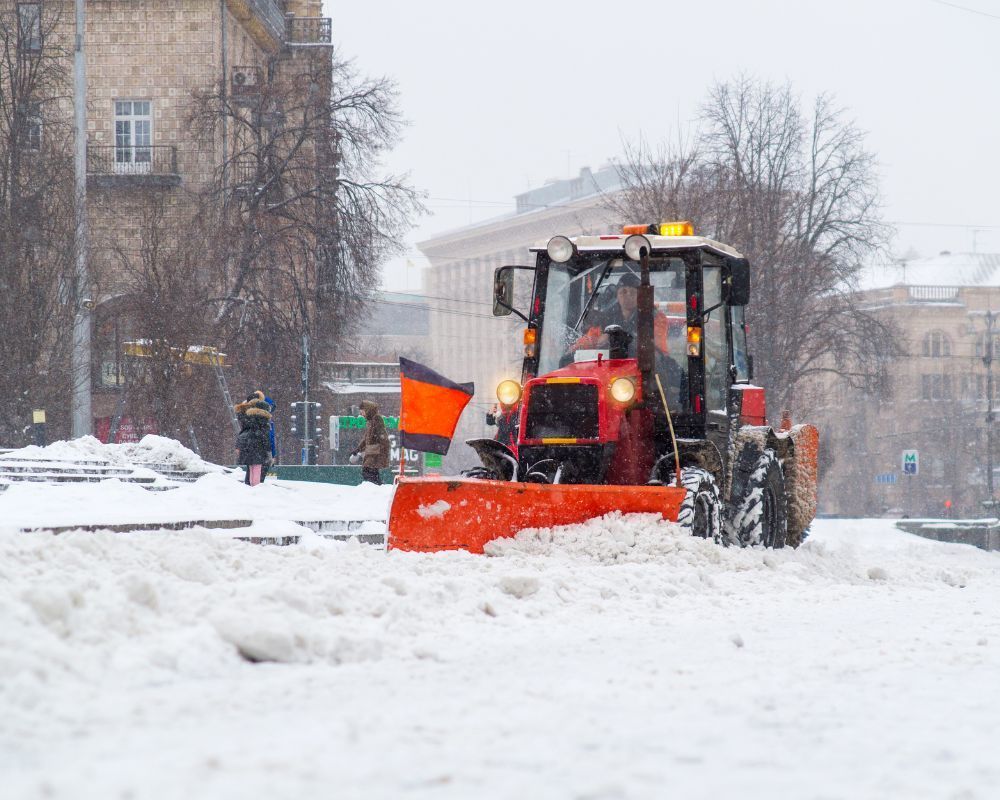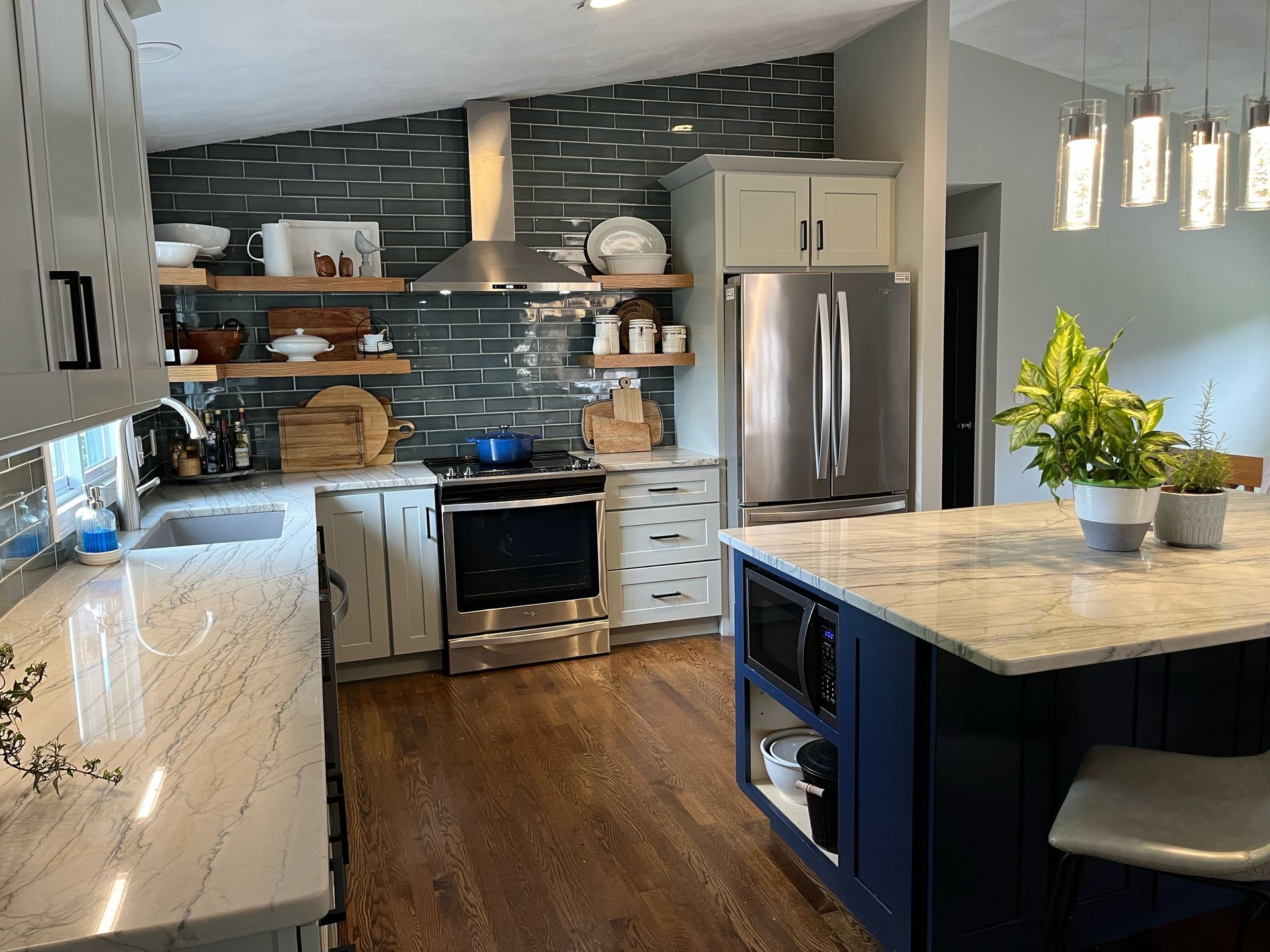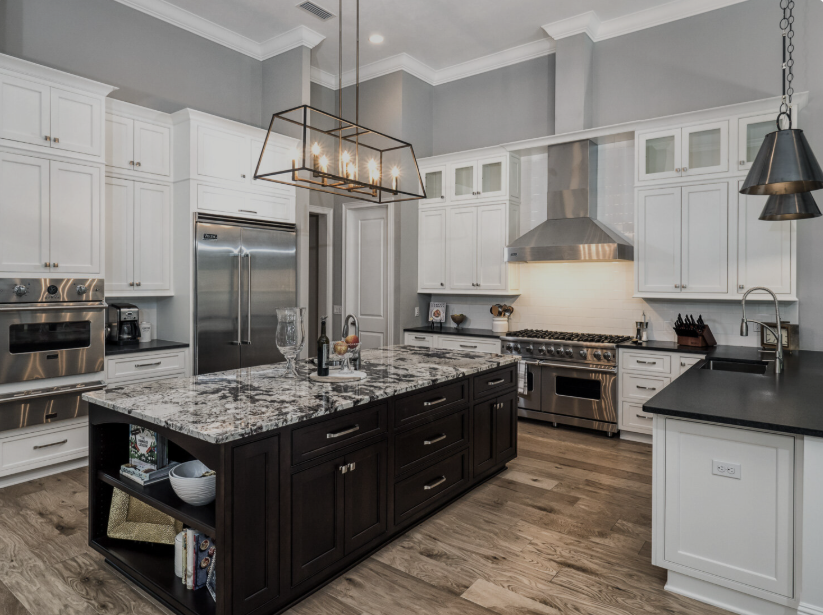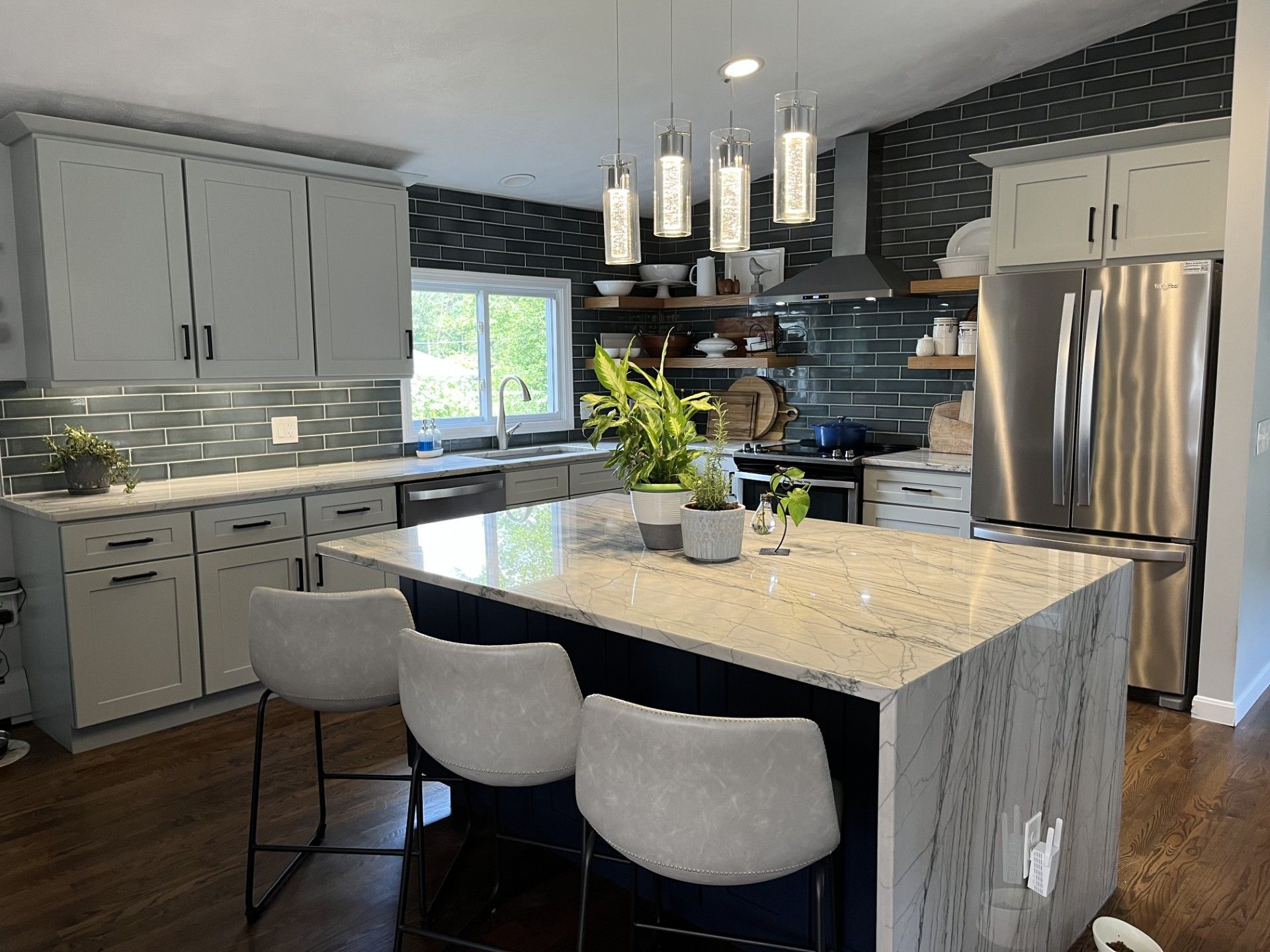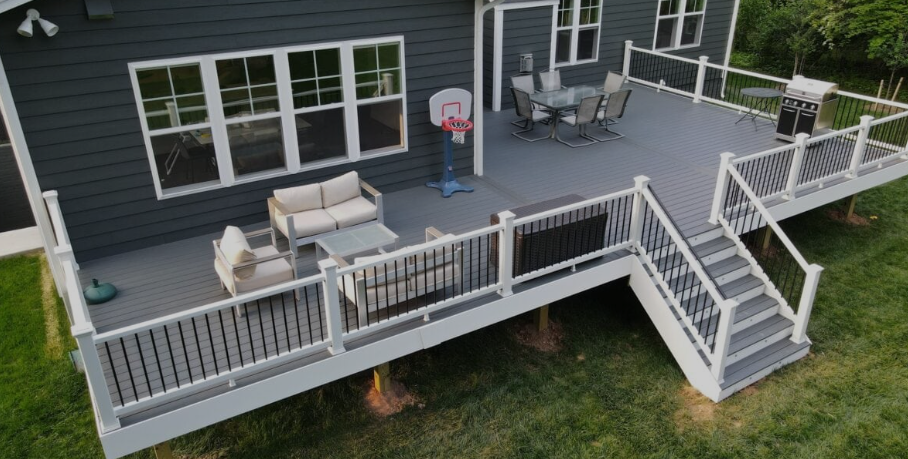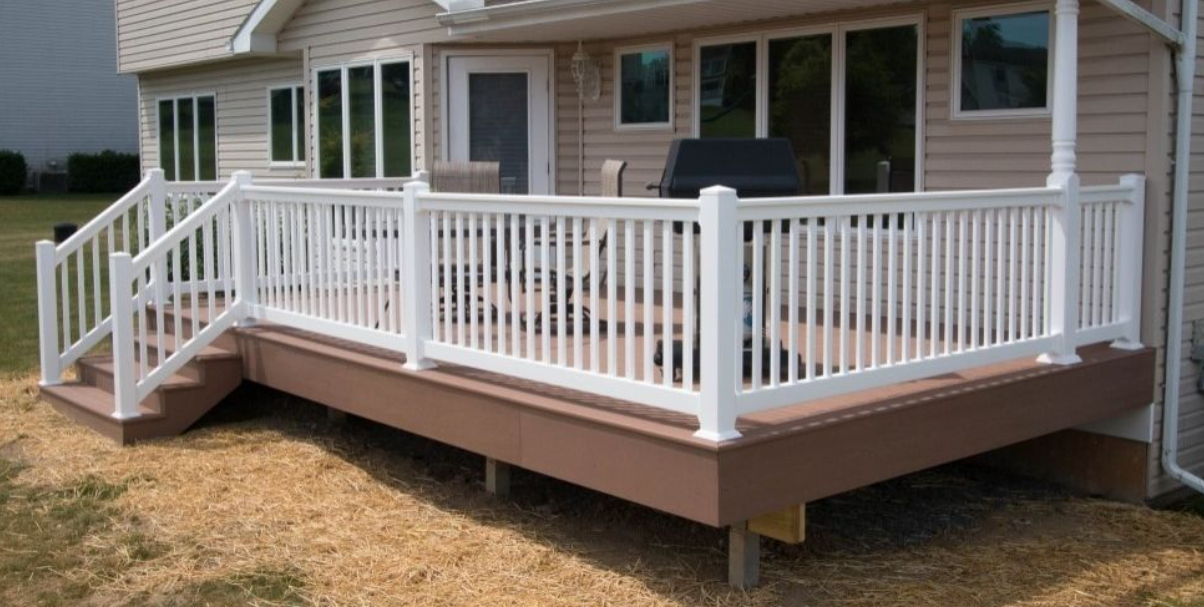By David Antonucci
•
December 5, 2025
If you're planning a kitchen renovation in Providence, Warwick, Cranston, East Greenwich, or anywhere across Rhode Island, choosing the right layout is the foundation of a functional, beautiful kitchen. The layout determines how efficiently you can cook, how comfortably your family gathers, and how well your kitchen serves your daily needs. Rhode Island's diverse housing - from historic colonials in Providence to modern condos in downtown Newport, from Cape Cod cottages along the coast to sprawling suburban homes in Barrington - requires a variety of kitchen layout solutions. The Five Most Popular Kitchen Layouts in Rhode Island Rhode Island homeowners consistently choose from five proven layouts, each offering distinct advantages. 1. L-Shaped Kitchen Layout The L-shaped layout dominates Rhode Island kitchen renovations, featuring counters and cabinets forming an L along two perpendicular walls, open design creating a natural work triangle, flexibility for dining areas or islands, and suitability for small to large spaces. This layout appears in approximately 40% of Rhode Island kitchen renovations due to its versatility and efficiency. 2. U-Shaped Kitchen Layout U-shaped kitchens surround cooks with workspace, offering maximum counter and cabinet space, efficient work triangle with everything within reach, enclosed design ideal for serious cooking, and best fit for medium to large kitchens. Popular in suburban Rhode Island homes in Warwick, Cranston, and East Greenwich where space permits. 3. Galley Kitchen Layout Galley kitchens feature parallel counters creating an efficient corridor with highly efficient work triangle, maximum storage in minimal space, compact design perfect for narrow spaces, and classic design common in older Rhode Island homes. Found throughout Providence's historic neighborhoods, Newport's older properties, and urban Rhode Island locations. 4. Kitchen with Island Islands transform kitchen functionality by adding extra counter space and storage, seating for casual dining and entertaining, housing sink or cooktop options, and serving as kitchen focal point. Islands work with L-shaped, U-shaped, and open layouts when space permits. Increasingly popular in Rhode Island renovations where homeowners expand kitchens. 5. Open Concept Kitchen Open layouts integrate kitchen with living areas through removal of walls between kitchen and dining/living rooms, spacious feel perfect for entertaining, connection allowing family interaction while cooking, and contemporary design popular in modern Rhode Island homes. This layout is trending in Providence's renovated triple-deckers, modern suburban homes, and new construction throughout Rhode Island. L-Shaped Kitchen Layouts: Rhode Island's Most Popular Choice L-shaped kitchens work beautifully in Rhode Island's diverse home styles. Why L-Shaped Layouts Dominate This layout's popularity stems from efficiency with natural work triangle between sink, stove, and refrigerator, flexibility accommodating various kitchen sizes, openness avoiding the closed-in feel of U-shaped designs, and easy addition of islands when space allows. L-shaped kitchens suit both small urban Providence condos and spacious East Greenwich colonials. Ideal Dimensions for Rhode Island Homes Small L-shaped kitchens measure 10x10 feet to 10x12 feet, perfect for condos and smaller homes. Standard L-shaped kitchens run 10x14 feet to 12x16 feet, fitting most Rhode Island homes comfortably. Large L-shaped kitchens span 12x18 feet to 14x20 feet, allowing generous counter space and possible island addition. Each leg of the L typically measures 8-14 feet for optimal proportion and function. Optimizing L-Shaped Layouts Maximize this layout by placing the sink on one leg and stove on the other for an efficient triangle, positioning refrigerator at the L's end for easy access, utilizing a corner with pull-out organizers, and adding an island if space exceeds 14 feet between legs. Cost Considerations for Rhode Island L-shaped kitchen renovations in Rhode Island cost $15,000-$35,000 for basic to mid-range materials and appliances, $35,000-$65,000 for quality materials and upgrades, and $65,000-$100,000+ for luxury finishes and high-end appliances. Costs vary by kitchen size, material choices, and whether plumbing or electrical relocations are needed. Best Rhode Island Applications L-shaped layouts excel in open floor plans common in modern Rhode Island homes, medium-sized kitchens (the Rhode Island average), renovations adding kitchen space to dining areas, and homes where the kitchen opens to the family room or living area. U-Shaped Kitchen Layouts: Maximum Workspace U-shaped kitchens provide unmatched storage and counter space for serious cooks. Advantages of U-Shaped Design Three walls of cabinets and counters offer abundant storage and workspace, enclosed design creating defined cooking zones, efficient work triangle with everything within easy reach, and multiple cooks can work without interfering. Rhode Island homeowners who love cooking often choose U-shaped layouts. Space Requirements U-shaped kitchens need adequate space to function well. Minimum dimensions are 8x8 feet (tight but functional). Comfortable dimensions are 10x10 feet to 12x12 feet. Ideal dimensions are 12x14 feet or larger for a spacious feel. The opening between legs should measure at least 4-5 feet for comfortable movement. Larger spaces (6-8 feet between legs) feel more open and allow multiple cooks. Avoiding the "Too Closed" Feel U-shaped kitchens can feel enclosed. Mitigate this by using lighter cabinet colors (white, light gray), incorporating glass-front upper cabinets, adding under-cabinet lighting, creating open shelving on one wall, and ensuring adequate natural light. Consider eliminating upper cabinets on one leg if the kitchen feels cramped. Corner Solutions U-shaped layouts create two corners requiring smart storage. Options include lazy susan cabinets ($200-400 each), pull-out corner drawers ($300-600), magic corner systems ($400-700), and diagonal corner cabinets. Rhode Island kitchen designers recommend investing in quality corner solutions - they dramatically improve usability. Best Rhode Island Applications U-shaped kitchens work best in dedicated kitchen rooms common in traditional Rhode Island homes, larger kitchens where space isn't constrained, homes of serious cooks wanting maximum workspace, and properties where the kitchen doesn't need to feel open to other areas. Popular in Barrington, East Greenwich, and South County homes with generous kitchen space. Galley Kitchen Layouts: Efficient Classic Design Galley kitchens make the most of limited space while providing excellent functionality. Why Galley Kitchens Work This time-tested layout offers exceptional efficiency with everything within a few steps, maximum storage per square foot, natural work triangle along two walls, and classic design complementing historic architecture. Galley kitchens appear throughout Providence's Federal Hill, College Hill, and other historic neighborhoods. Ideal Galley Dimensions Successful galley kitchens require proper proportions. Width between counters should be 4-6 feet (4 feet minimum for one cook, 5-6 feet for two cooks comfortably). Length typically runs 8-16 feet depending on home size. Shorter galleys (under 10 feet) feel compact, while longer galleys (14+ feet) provide ample counter space. Single-Cook vs. Two-Cook Galleys Narrow galleys (4-4.5 feet wide) work well for single cooks but feel cramped with two people. Wider galleys (5-6 feet) accommodate multiple cooks comfortably while remaining efficient. Consider your cooking style when planning galley width. Solving Common Galley Challenges Galley kitchens face specific challenges with solutions including: Through-traffic problem: Many galley kitchens serve as hallways. Solutions include moving doorways to create dead-end galleys, adding swinging or pocket doors, or embracing the flow with durable flooring. Limited natural light: Galleys in home interiors lack windows. Solutions include under-cabinet lighting, pendant lights over counters, and light cabinet colors. Feeling cramped: Narrow galleys can feel confining. Solutions include using single upper cabinets on one wall, incorporating open shelving, and choosing light colors throughout. Making Galley Kitchens Feel Larger Visual tricks expand galley kitchens including mirrors or reflective backsplash materials, light cabinet colors (white, cream, light gray), glass-front upper cabinets, minimal upper cabinets on one side, and continuous flooring extending into adjacent rooms. Cost Considerations Galley kitchen renovations cost less than other layouts due to smaller size. Rhode Island galley renovations typically run $12,000-$25,000 for basic to mid-range, $25,000-$45,000 for quality materials and appliances, and $45,000-$70,000 for luxury finishes. Best Rhode Island Applications Galley layouts excel in historic Providence, Pawtucket, and Newport homes with narrow kitchen spaces, urban condos and apartments, smaller Cape Cod and colonial homes, and renovations where expanding kitchen footprint isn't possible. Kitchen Islands: The Game-Changing Addition Islands dramatically improve kitchen functionality when space permits. Why Islands Are Essential Islands have become expected features in Rhode Island kitchens offering additional counter space (averaging 15-25 square feet), extra storage with cabinets and drawers, casual seating for 2-4 people, housing sinks or cooktops, and serving as entertaining focal points. Over 60% of Rhode Island kitchen renovations include islands when space allows. Space Requirements for Islands Islands need adequate clearance to function safely. Minimum clearance around islands is 36 inches (tight but code-compliant). Comfortable clearance is 42-48 inches for one cook. Ideal clearance is 48-54 inches allowing multiple cooks and traffic flow. Measure carefully - islands in too-small kitchens create frustration rather than function. Island Size Guidelines Standard Rhode Island kitchen islands measure 4 feet long x 2 feet deep (small, seats 2), 5-6 feet long x 3 feet deep (medium, seats 3), and 7-8 feet long x 3-4 feet deep (large, seats 4+). Scale islands proportionally to kitchen size. Oversized islands in small kitchens feel overwhelming. Island Seating Options Islands accommodate various seating arrangements. Standard counter height (36 inches) with 24-30 inch stools works for casual dining. Bar height (42 inches) with 28-34 inch stools creates more defined separation. Two-level islands combine workspace at 36 inches with dining at 42 inches. Allow 24 inches of width per seated person for comfortable dining. Island Features Popular in Rhode Island Rhode Island homeowners commonly request prep sinks for multi-cook households, cooktops creating cooking focal points (requires ventilation), wine refrigerators, dishwashers on island (convenient for cleanup), microwave drawers, pot and pan storage, and cookbook and tablet holders. Island Cost Considerations Basic islands without plumbing or electrical cost $2,000-$5,000. Mid-range islands with sink or electrical run $5,000-$10,000. Custom islands with cooktops and premium features cost $10,000-$20,000+. Add $800-$2,000 for plumbing extensions and $500-$1,500 for electrical work. Portable vs. Built-In Islands Portable islands offer flexibility with mobility to reconfigure space, lower cost ($300-$2,000), no installation required, and easy removal if needed. Built-in islands provide permanence with more substantial storage, ability to include plumbing and electrical, anchored stability, and custom sizing fitting your space exactly. Most Rhode Island renovations incorporate built-in islands for long-term value. Open Concept Kitchen Layouts: Modern Living Open layouts have transformed how Rhode Island families use kitchens. The Open Concept Trend Open kitchens integrated with living areas have surged in popularity through enhanced family interaction while cooking, spacious feel even in smaller homes, improved natural light flow, superior entertaining capability, and contemporary aesthetic. This layout appears in 50% of Rhode Island kitchen renovations where structural changes are possible. Creating Open Concepts in Rhode Island Homes Opening kitchens requires removing walls between kitchen and dining or living rooms, verifying walls aren't load-bearing (or installing beams if they are), maintaining proper kitchen ventilation, and defining zones within open space. Load-bearing wall removal costs $1,500-$5,000 for beam installation in Rhode Island homes. Challenges in Historic Rhode Island Homes Providence's historic homes and older properties throughout Rhode Island present obstacles including load-bearing walls throughout structure, low ceiling heights complicating beam installation, historic preservation requirements in designated districts, and structural complexities in old construction. Consult structural engineers before removing walls in homes built before 1950. Defining Kitchen Zones in Open Plans Without walls, define kitchen space using flooring changes (tile in kitchen, hardwood in living area), ceiling treatments (coffered ceiling over kitchen), lighting variations (pendants over island mark kitchen), furniture placement (sofa backs to kitchen), and color or material transitions. Managing Open Kitchen Considerations Open kitchens require addressing kitchen messes visible from living areas (requires tidiness), cooking smells spreading throughout (demands excellent ventilation), noise from appliances in shared space, and reduced wall space for cabinets. Rhode Island homeowners embracing open concepts typically prioritize large islands with ample storage compensating for lost wall cabinets. Cost Implications Opening kitchen layouts costs $5,000-$15,000 for removing non-load-bearing walls, $8,000-$20,000 for removing load-bearing walls and installing beams, $3,000-$8,000 for extended flooring in unified space, and $2,000-$6,000 for additional lighting and electrical. Total open concept transformations often cost $20,000-$50,000 before kitchen finishes. The Work Triangle: Timeless Kitchen Design Principle Understanding the work triangle optimizes any layout. What is the Work Triangle? The work triangle connects the three primary work areas: the sink (cleaning zone), stove/cooktop (cooking zone), and refrigerator (storage zone). Ideal Triangle Dimensions Efficient work triangles follow these guidelines: each leg measures 4-9 feet (closer is too cramped, farther requires excessive walking), total triangle perimeter is 13-26 feet, no major traffic paths cut through the triangle, and no obstacles block movement between points. Triangle in Different Layouts L-shaped kitchens naturally create efficient triangles with sink and stove on different legs, refrigerator at the end. U-shaped kitchens position each element on different walls creating a compact triangle. Galley kitchens alternate elements on opposite walls. Islands can disrupt triangles - place sink or cooktop on island carefully. Modern Kitchen Zones Large Rhode Island kitchens have evolved beyond simple triangles to multiple zones including prep zone with cutting boards and knives, cooking zone with stove and oven, cleaning zone with sink and dishwasher, storage zone with refrigerator and pantry, and beverage zone with coffee maker and water dispenser. Luxury Rhode Island kitchens in Barrington and East Greenwich often incorporate all these zones. Small Kitchen Layouts for Rhode Island Homes Many Rhode Island homes have limited kitchen space requiring smart layout choices. Maximizing Small Kitchen Function Small kitchens (under 100 square feet) demand efficiency. Strategies include choosing galley or L-shaped layouts (most efficient for small spaces), using every inch of vertical space with tall cabinets, incorporating pull-out organizers and lazy susans, selecting apartment-sized appliances (24-inch dishwashers, narrower ranges), and using light colors expanding visual space. Compact Appliance Solutions Small Rhode Island kitchens benefit from 24-inch dishwashers versus standard 30-inch models, 24-30 inch ranges versus 36-inch, counter-depth refrigerators looking built-in, combination microwave-convection ovens, and compact wine refrigerators. Single-Wall Kitchens The most compact layout places everything along one wall. This works for studio apartments in Providence, in-law apartments common in Rhode Island, tiny houses, and kitchens under 60 square feet. Single-wall kitchens sacrifice efficiency but maximize space in constrained locations. Small Kitchen Budgets Small Rhode Island kitchen renovations cost $8,000-$18,000 for basic updates with stock cabinets, $18,000-$30,000 for quality materials and semi-custom cabinets, and $30,000-$50,000 for high-end finishes and appliances. Smaller doesn't always mean cheaper - quality materials and skilled labor cost similarly regardless of kitchen size. Large Kitchen Layouts for Rhode Island Homes Spacious kitchens (200+ square feet) offer design flexibility but require careful planning. Avoiding the "Too Big" Problem Large kitchens can feel cavernous and inefficient. Solutions include creating multiple work zones (baking area, coffee bar, etc.), adding islands to break up space, using different flooring defining zones, varying ceiling heights, and incorporating seating areas. Double Kitchen Concepts Very large Rhode Island kitchens (300+ square feet) can incorporate dual work areas with two sinks for multi-cook households, double ovens or ranges, dual dishwashers, and separate prep and cleanup zones. High-end East Greenwich and Barrington properties sometimes feature these professional-grade layouts. Maintaining Efficiency Keep large kitchens functional by positioning the primary work triangle compactly (even if the room is large), adding secondary work zones for specific tasks, ensuring adequate lighting throughout, and breaking visual monotony with varying cabinet heights and colors. Large Kitchen Budgets Large Rhode Island kitchen renovations cost $40,000-$75,000 for quality mid-range finishes, $75,000-$125,000 for premium materials and appliances, and $125,000-$200,000+ for luxury custom kitchens. Kitchen Layouts by Rhode Island Home Style Architectural style influences ideal kitchen layouts. Colonial Homes Rhode Island's abundant colonials suit U-shaped or L-shaped layouts maintaining traditional defined kitchen space, islands becoming modern family hubs, classic finishes with modern function, and preservation of original architectural details where possible. Cape Cod Homes Cape Cod cottages work well with galley kitchens fitting compact footprints, L-shaped designs in expanded capes, coastal finishes (whites, blues), and efficient use of limited space. Victorian Homes Historic Victorians in Providence and Newport accommodate galley kitchens common in original floorplans, opened layouts where structural changes are possible, period-appropriate finishes with modern function, and working within existing architectural constraints. Ranch Homes Mid-century ranches found throughout suburban Rhode Island feature open concepts connecting kitchen to living areas, L-shaped layouts with peninsulas, efficient galley designs in compact ranches, and modern updates maintaining period character. Modern Homes Contemporary Rhode Island properties embrace open concept as standard, large islands as room focal points, clean-lined minimal designs, and zones rather than defined rooms. Choosing the Right Layout for Your Rhode Island Kitchen Select layouts based on multiple factors considering space available, cooking habits and frequency, household size and cooking styles, entertaining frequency, budget for renovation, and home's architectural style. Questions to Ask Clarify priorities by asking: How many cooks regularly use the kitchen? Do you entertain frequently? Is the kitchen a family gathering spot? What's your budget range? Can you modify the home's structure (remove walls)? What storage do you need? How long will you live in this home? Answers guide layout selection and design priorities. Creating Your Perfect Rhode Island Kitchen Layout The kitchen layout you choose fundamentally shapes how your kitchen functions, how your family uses the space, and how well it serves your daily needs. Whether you're working with a compact galley in Providence's historic neighborhoods, planning an L-shaped layout in your Warwick colonial, designing a spacious U-shaped kitchen in your East Greenwich home, or creating an open concept in your Cranston ranch, the right layout makes all the difference. From the efficiency of galley kitchens to the spaciousness of open concepts, from the versatility of L-shaped designs to the workspace abundance of U-shaped layouts, each configuration offers distinct advantages. Islands enhance any layout when space permits, serving as the functional and social hub modern Rhode Island families expect. Ready to design the perfect kitchen layout for your Rhode Island home? Rockhouse Construction is ready to help. Contact us today for a free consultation. Our experienced team has designed and built hundreds of kitchens throughout Providence, Warwick, Cranston, and across the Ocean State. We'll help you evaluate your space, explore layout options, and create a kitchen that works beautifully for your family for years to come.
